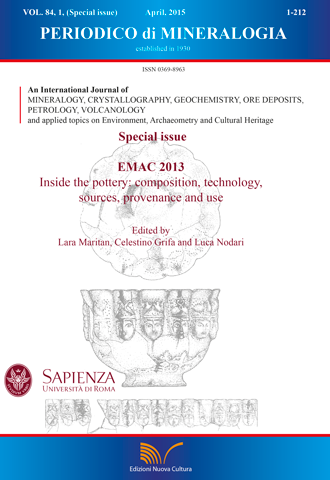Iranian Bowl from Biliar: Complex Research and Conservation
DOI:
https://doi.org/10.2451/2015PM0006Keywords:
Conservation, Scanning Electron Microscopy, fritware, Iran, BiliarAbstract
The article represents the experience of complex research and conservation of an outstanding specimen of medievalIslamic fine wares - Iranian 12th century bowl found in archaeological excavations in Biliar, a capital of VolgaBulgarisinthe 11th – beginning of the 13th centuries. Main methods of investigation are morphological,technological and semantic analyzes. Chemical composition of ceramic body and glaze was determined by Scanning Electron Microscopy (SEM). The bowl is shaped by pressing into a mold with added foot-ring. 14 lobes of the bowlare decorated with 14 differing feminine faces in headdresses (crowns?), 13 of which are adorned with pairedconfronted birds: doves, falcons, partridges, ducks, geese, and swans. The walls of the bowl are pierced along theedges of the faces, with tiny holes filled with transparent glaze, so the walls are translucent against the light. Thebowl is coated with glaze all over except the foot-ring and adorned by underglaze splashes of cobalt. The bowl waspreviously treated in the field, where it was assembled of 22 fragments, and we had to deal with its full retreatment.Conservation approach was developed individually on the basis of characteristics of body and glaze, peculiarities ofmanufacture, damages and deterioration of ceramic and restoration materials. The whole conservation process isrepresented in the article. The process of edges cleaning was the most time-and effort demanding one, whiledesalination and loss compensation turned out to be most difficult in terms of taking correct conservation decisions.As a result of full re-treatment, the item was thoroughly investigated, its body released off excessive chloride saltsand consolidated. The bowl got aesthetical appearance worth both its historical value and artistic merits and can besuccessfully presented on the exposition of renowned university museum on the rights of the “pearl” of itscollection.


